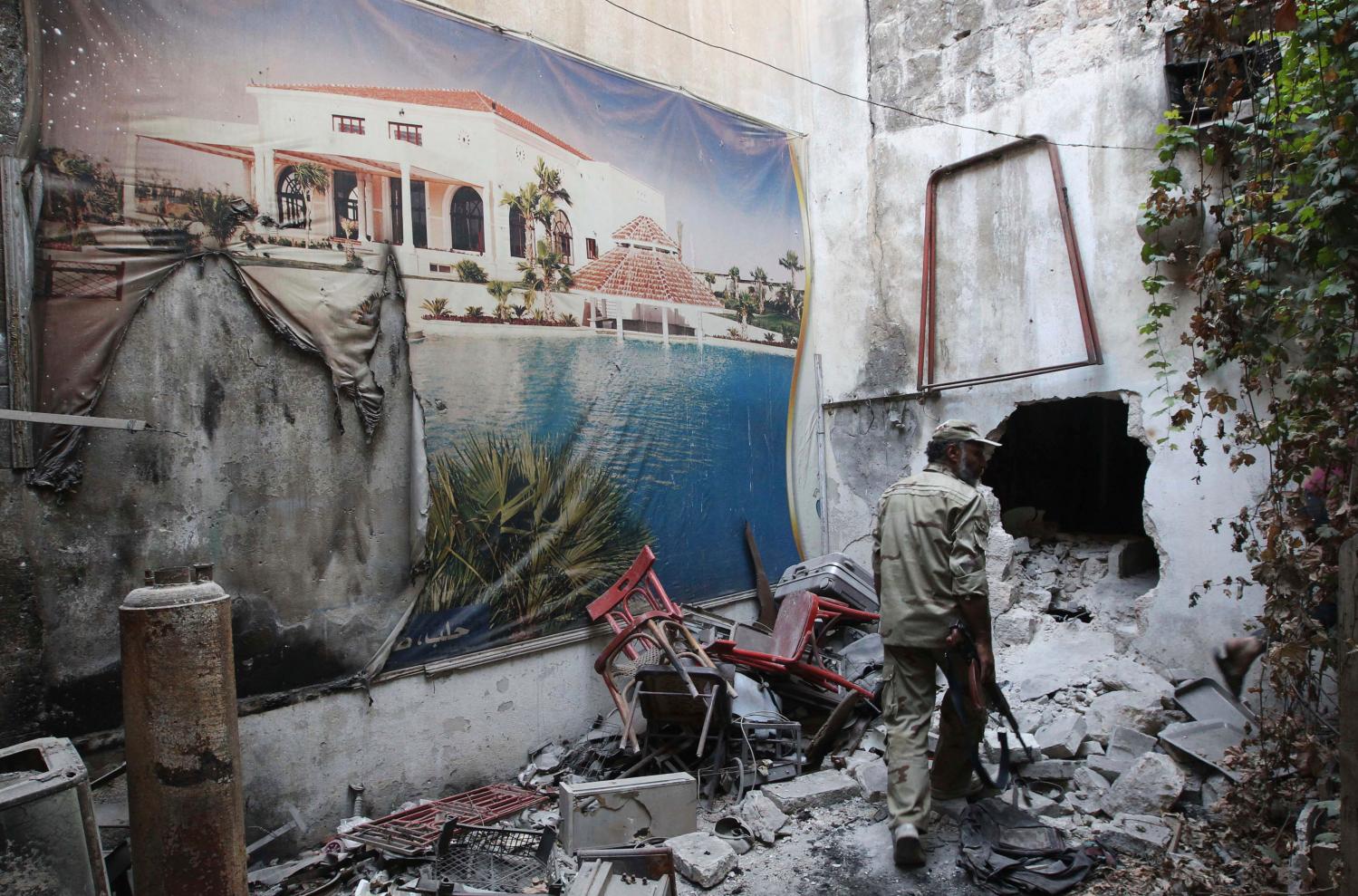Executive summary
Beginning as early as 2012, the Bashar Assad regime in Syria has worked to put in place the legal and regulatory authorities to implement an ambitious vision of reconstruction as a process of authoritarian stabilization. With its military victory close at hand, the regime’s intent is to use reconstruction to reimpose its authority, tighten its control over Syria’s society and economy, and fundamentally alter Syria’s demography to achieve what Assad himself has characterized as a “healthier and more homogenous society.”
The odds that it will achieve these aims are high. Contrary to views of the Assad regime as too severely weakened by eight years of conflict to reassert its authority, it faces relatively few obstacles in its drive to reimpose its control. The reasons for this are rooted in the nature of the Assad regime and in how Syria’s conflict unfolded, defying widely-held assumptions about the effects of civil war on pre-war institutions and governance practices, and creating a post-conflict landscape that the regime will find relatively easy to navigate. Today, for all intents and purposes, the structure, governance, and organization of post-conflict reconstruction in Syria are settled issues. The Assad regime has consolidated its dominance over the levers of reconstruction, rendering it virtually impervious to external pressure.
This assessment of Syria’s post-conflict landscape poses challenges for both policymakers and development practitioners. To date, however, neither have addressed its implications for policy or how Syria’s experience challenges the core assumptions that dominate current approaches to reconstruction. This paper argues that both policy and practice rest on problematic assumptions and calls for a fundamental rethinking of what the options are for those hoping to shape Syria’s post-conflict trajectory.
The disconnect between policy and practice, on the one hand, and conditions on the ground, on the other hand, is due in no small measure to the blinkered effects of interpreting Syria through the lens of “fragility.” Syria is regularly held out as an example of a fragile state driven into conflict by the cumulative effects of poor governance and dysfunctional institutions. It is more accurate, however, to describe Syria as a “fierce” state: one in which ruling elites elevate survival above all else and design institutions to support this aim. In fierce states, the consolidation of such institutions and their effectiveness is often tied to attributes that directly contradict those seen as necessary to overcome fragility, including accountability, voice, equity, transparency, and inclusion. Instead, governance in fierce states is managed as an expression of a zero-sum existential struggle in which conflict reinforces the determination of a ruling elite to defend existing institutional arrangements by force. Not all fierce states survive challenges on the scale of those confronted by the Assad regime. Those that do, however, credit their survival to the very institutions, norms, and practices that reconstruction orthodoxy targets for reform.
This diagnosis has obvious implications for both policy and practice. Fierce states are poor candidates for the standard reconstruction treatment. They call into question the value of fragility-based models of state failure as a guide for policy. Absent recognition of the limits of fragility-based frameworks, and without acknowledging the extent to which the Assad regime has consolidated its hold over the instruments of reconstruction, the United States and EU may well fall into the trap of viewing Syria through the lens of current, fragility-based reconstruction orthodoxy. Such an approach, this paper argues, would be a mistake. It vastly underestimates the resilience of the institutions, norms, and practices that define economic governance in Assad’s Syria. It does not take adequate account of the near impossibility of pursuing any form of reconstruction support that will not contribute to the regime’s project of authoritarian stabilization and demographic change, or avoid channeling funds into the pockets of regime cronies and warlords. The hope, however modest, that political conditions might someday permit external actors to engage in effective, accountable reconstruction programming in Syria, or through their interventions influence the course of reconstruction, is deeply misguided.
What both policymakers and practitioners should recognize is that the Assad regime’s efforts to shape an architecture that ensures its unchallenged control over every aspect of the reconstruction process are too far advanced for external actors to unravel or easily circumvent. If the United States and EU wish to influence Syria’s post-conflict trajectory, they will need to rely on alternatives to reconstruction as potential sources of influence or pressure on the Assad regime.
The Brookings Institution is committed to quality, independence, and impact.
We are supported by a diverse array of funders. In line with our values and policies, each Brookings publication represents the sole views of its author(s).






